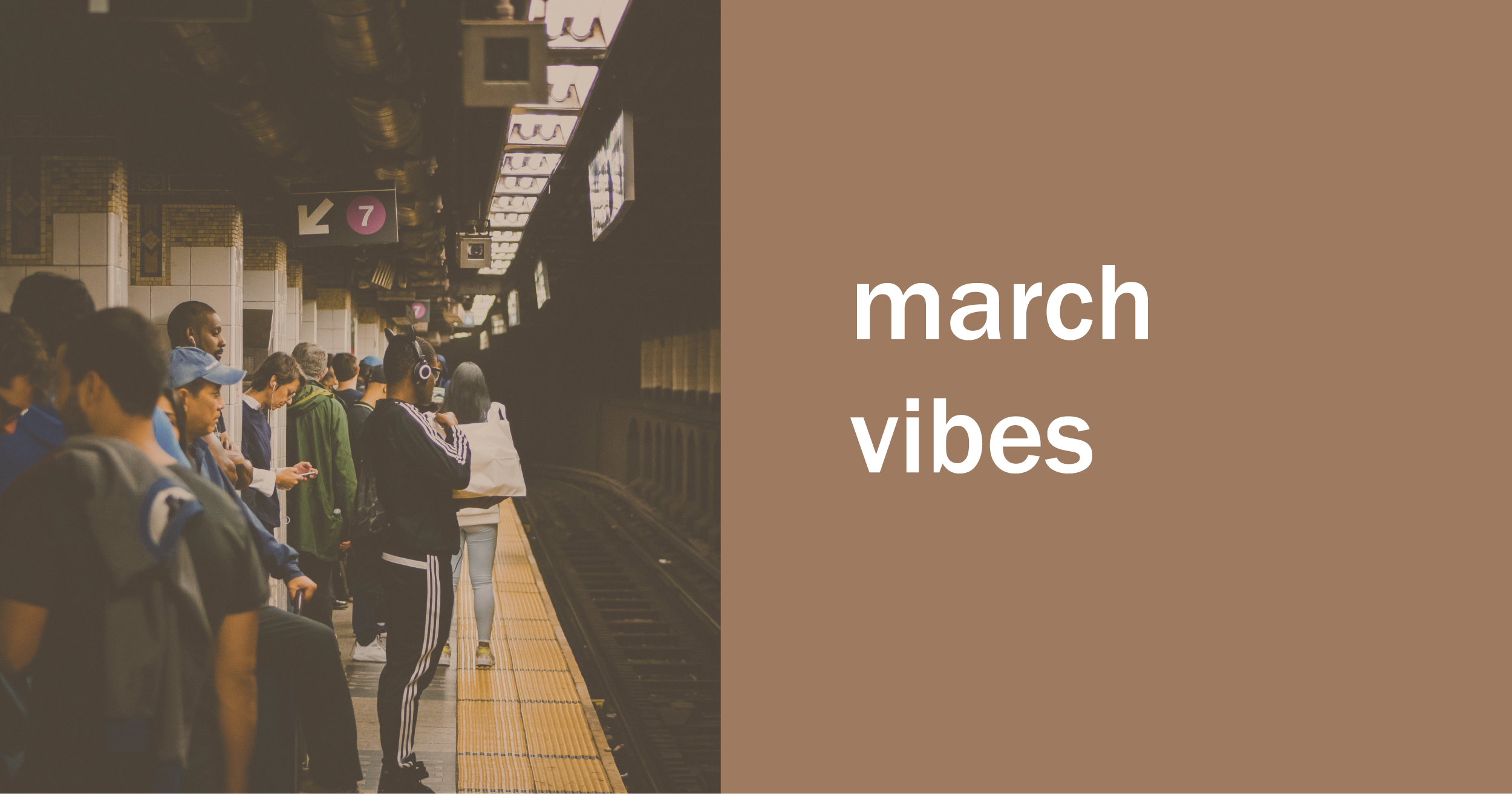What Every Personality Test Has Taught Me About Myself
Photo by Austin Pacheco on Unsplash
I love personality tests. Maybe because it makes me feel listened to, even if there's no person specifically involved in the time spent learning – even if it's just me and a book. Maybe because it can just be me and a book, it's a uniquely safe way for me to say how I really feel and learn what to do with that. In any case, this process has been incredibly growing for me. And I want to share that.
Myers-Briggs
INFP-T: "The Mediator"
link
Snapshot
"Mediator personalities are true idealists, always looking for the hint of good in even the worst of people and events, searching for ways to make things better. While they may be perceived as calm, reserved, or even shy, Mediators have an inner flame and passion that can truly shine. Comprising just 4% of the population, the risk of feeling misunderstood is unfortunately high for the Mediator personality type – but when they find like-minded people to spend their time with, the harmony they feel will be a fountain of joy and inspiration..."
In one sentence...
My desire to seek good in the world is an asset, and an inherent part of who I am, not naïveté or over-sensitivity.
The thing it says that's scary true...
"[S]eemingly every Mediators’ dream growing up [is] to become an author. While a novel is a classic choice, it is rarely an accessible one..."
I wrote my first "book" in the 2nd or 3rd grade and wanted to be a published novelist by the time I turned 16. I wrote more than one novel-length piece by the time I graduated college, and still dream of releasing a book of short stories one day.
When this personality test entered my life...
I was in high school. The first time I took it, the "-T" (which means "Turbulent") wasn't a part of it and taking the test was framed as a way to know what kind of career you might be well-suited for. I recently retook this test as a part of an amazing group I'm a part of, HER.
What I first learned from what it has to say...
It encouraged me to understand and embrace my introverted-ness as something to be aware of and balance, but not a weakness.
It also encouraged me to continue to press into the social causes that had always intrigued me, and to not be afraid of doing something a little non-traditional if it helped me to go in that direction. This was on my mind in college, when I created my interdisciplinary major, Educational Activism in the Arts, and studied the reach and impact of modern day slavery across the world and the U.S.
What I am still learning...
The new element of Assertive vs. Turbulent is very interesting to me. Here's more about "Turbulent" folks, like myself:
"[I]ndividuals with Turbulent (-T) identity are self-conscious and sensitive to stress. They experience a wide range of emotions and tend to be success-driven, perfectionistic and eager to improve."
All feels true, but I haven't fully processed this new information yet so more to come on that front soon. Also, I've never paid for my full Myers-Briggs profile (LOL) so I've never gotten to the part where it really gives me specific advice. It's almost $33 to get a premium profile so... maybe I'll budget it in another month...
Enneagram
Type Four: "The Individualist"
link
Snapshot
"Fours are self-aware, sensitive, and reserved. They are emotionally honest, creative, and personal, but can also be moody and self-conscious. Withholding themselves from others due to feeling vulnerable and defective, they can also feel disdainful and exempt from ordinary ways of living. They typically have problems with melancholy, self-indulgence, and self-pity. At their Best: inspired and highly creative, they are able to renew themselves and transform their experiences..."
In one sentence...
I am soft, but that's not bad.
The thing it says that's scary true...
"The 9-5 corporate life is usually not for them. They may run their own company as long as there's a creative component to their work and it's emotionally satisfying..."
When this personality test entered my life...
After college, when I had just started working at a small nonprofit in my city.
What I learned from what it has to say...
The Enneagram specifically calls out how folks of different types act at different levels of health.
I realized I spent most of my college years at a sort of medium Type Four health level. I was struggling with anxiety at the time – which didn't make anything easier – in some ways I actively isolated myself, in other ways it was subconscious or fear-driven self-fulfilling prophesy ("They wouldn't want me at their party anyway so I won't even try to go"). I sunk into fantasies and allowed myself to stew in melancholy, even sometimes told myself that this was just part of being a better artist.
What I am still learning...
When I revisited the site, I read these gems and realized wow, I've come a long way and I have yet some ways to go.
"Avoid putting off things until you are 'in the right mood.' Commit yourself to productive, meaningful work that will contribute to your good and that of others, no matter how small the contribution may be. Working consistently in the real world will create a context in which you can discover yourself and your talents. (Actually, you are happiest when you are working—that is, activating your potentials and realizing yourself. You will not 'find yourself' in a vacuum or while waiting for inspiration to strike, so connect—and stay connected—with the real world."
"Avoid lengthy conversations in your imagination, particularly if they are negative, resentful, or even excessively romantic. These conversations are essentially unreal and at best only rehearsals for action—although, as you know, you almost never say or do what you imagine you will. Instead of spending time imagining your life and relationships, begin to live them."
BOTH SO TRUE FOR ME. To this day, I actively talk myself through each of these challenges. I wrote this post when I didn't really "feel like it," and keeping busy is part of how I avoid leaning too hard into over-imagining my possible futures.
Astrology
Gemini Sun, Virgo Moon,
Virgo Ascendant
link; link
Snapshot
"Gemini people do not sit back and watch the scenery go by. As a Gemini, you are endlessly curious about everything and must be a part of the busy passing scene... Duality is your most famous trait. You usually want more than one of everything. That includes jobs, hobbies, careers, and lovers. Basically your nature is restless... Gemini is the sign of communication and its natives have an urgent and continual need to communicate."
"If you have the moon in Virgo... you do not pursue knowledge merely for the sake of learning; you figure out how to use what you learn... You are meticulous in sifting through information and tend to question whatever is told to you."
"Virgo Ascendants have deep and tender emotions and care a great deal about others... You appreciate the finely tuned mechanics of sifting through facts and information, finding the truth of the matter, introducing order and reason into almost any situation." (from The Only Astrology Book You'll Ever Need)
In one sentence...
I am "both" of many things, and above all, I always need to communicate.
The thing it says that's scary true...
When my birth chart was explained to me in January of 2017, it showed that creativity, children (not necessarily my own), and communication were main elements of my life. It affirmed that everything I was doing: quitting my old job, starting my business, becoming a doula (and nannying at the time) and investing in my creative work — it all made sense.
When this personality test entered my life...
My grandmother was probably the first person to introduce me to Astrology as a child, but it wasn't until 2017 that I had my birth chart created and explained to me, after a long car ride with a book about Astrology left my friend and me laughing and speechless over how accurate it was.
What I first learned from what it has to say...
The woman who explained my chart to me told me, "Look up what Jupiter in Leo in the 11th house means."
I don't remember exactly what I first found – I just remember thinking that I needed to have more faith in myself, and invest in myself.
What I read about Jupiter in the 11th house more recently is this:
"The meaning of life may be found through the larger community. Sometimes an over involvement in social activities can put stress on other areas of life when they promise too much. They really need to try and balance things out. Jupiter has a tendency to over-do things and will take on more than they can physically handle, and then neglect practical affairs." link
All super true. Becoming self-employed has led me into the most wide-spread community I've ever experienced. I've never met so many people in such a short amount of time. I've also had my fair share of the more typical experience of spreading myself too thin. Oops.
What I am still learning...
I'm still learning a ton about myself. I think DUALITY – the main theme for Gemini – is a huge part of that. Recently, I've been learning about how to be more practical, organized and social – how to lean into the areas of my life that I've traditionally leaned away from out of fear or misuse of my time.
I've also been learning how to take better care of myself so I have more energy to get out of my comfort zone and do things that are authentic, beautiful and meaningful. Yoga, massages, better food, vitamins, etc...
TO WRAP IT UP
Personality tests are obviously not the end all be all for anyone's life — but they can also offer some really valuable tools for self-evaluation and then... next steps!
I continue to be on the lookout for moments in my life when I teeter too close to unhealthy isolation or sink into melancholy, as well as, on the other end, times when I overbook myself and fall into other unhealthy patterns, like not exercising or eating well.
This has taught me that I have a lot to offer – to myself, my friends, my family, and the world. And that I am actually built to offer the specific things I have been so drawn to.
Ultimately I've learned that... I'm kind of complex!... like we all are... just me in my own specific way, and you in yours. We need to pay attention to ourselves, and others, notice the cues our bodies and minds gives us, and take care of ourselves – mind, body, and spirit. It's not easy, but I'm on it!
What have personality tests taught you about yourself? Do you identify with anything I've shared? Or want to know more? Hit me up with your thoughts in the comments below.




































Our Babybay Cosleeper was right next to us — supporting us baby step by baby step on our newborn sleep journey.